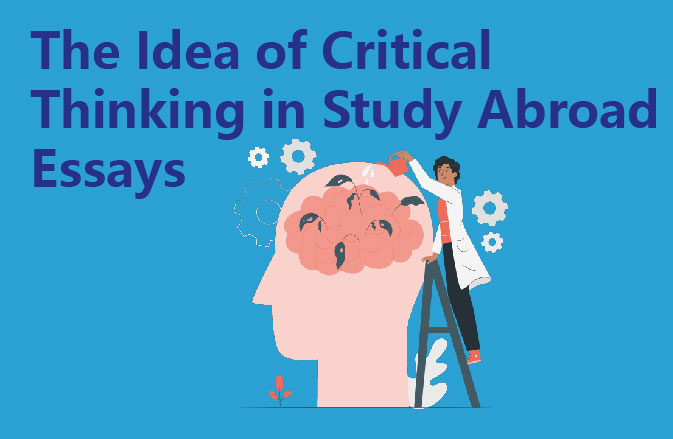The idea of critical thinking can be summarised in two sentences.
There is no absolute right there is absolutely no absolutely right thing to do
There is no permanent right there is never ever:right thing.
■ ■ Nothing can be said to be absolutely right
Foreigners look at the problem very dialectically and believe that the academic point of view can only say mainstream and non-mainstream or not, but absolutely can not say whether it is absolutely right.
■ How to Use Critical Thinking
Part of critical thinking involves being critical when reading other people’s articles or books.
Start by reading a lot of articles.
Paying attention to what the greats say, what the seniors don’t say, or what questions they ask is the starting point for critical thinking.
Here’s a tip from an academic who suggests that you can look for points that are missing in an article.
a) What is the main idea of the paper?
b) Does the author’s thesis (key argument) develop logically, step by step?
c) Are the examples given in the article useful? Would other examples be better?
d)Does the author have any apparent bias (subjective opinion or preference)?
e) Does the evidence presented seem reliable? Why?
f)Is this argument similar to other arguments I have read?
g) Do I agree with the author? If not, why?
We have put together some common sentences that organise critical thinking well and help you to express yourself critically better!
Critical thinking sentences that will amaze your professor
The essence of critical thinking is to question something, but note that this is not negativity, just not flat out agreement.
I. Highlight the shortcomings of previous studies
1. Most studies of X have only been carried out in a small
Most studies of X have only been carried out in a small number of areas.
2. However, much of the research up to now has been
However, much of the research up to now has been descriptive in nature….
3. The generalisability of much published research on this
The generalisability of much published research on this issue is problematic.
4. Research on the subject has been mostly restricted to
Research on the subject has been mostly restricted to limited comparisons of…
5. However, few writers have been able to draw on any
systematic research into…
II. Provide constructive suggestions
1.The study would have been more interesting if it had included….
2.These studies would have been more useful if they had focused n…
3.The study would have been more relevant if the researchers
The study would have been more relevant if the researchers had asked…
4.The questionnaire would have been more useful if It had asked par ticipants about…
5.The research would have been more relevant if a wider range of X had been explored
III. Introducing the Critical Position of a Specific Writer
1.The author challenges the widely held view that….
Smith (1999) takes issue with the contention that ….
3.The idea that . was first challenqed bv Smith (1992).
4.However Smith (1967) questioned this hypothesis and ….
Smith (1980) broke with tradition by raising thequestion of ….
6. Jones (2003) has challenged some of Smith’s conclusions, arguing that….
Jones (2003) has challenged some of Smith’s conclusions, arguing that…
Another major criticism of Smith’s study, made byJones (2003), is that…
8. Jones (2003) is critical of the conclusions that Smith draws from his findings.
IV. Weaknesses found in a single study or thesis
1.XXX to ful ly define what.
2.XXX fails to acknowledge the significance of .
3.The ma in weakness of the study is the fai lure to address how
4.The study fai to cons ider the differ ing categor ies of damage that.
5.The paper / author name fails to / makes no attempt to specify / quantify.
6./ compare … separate … use a standardi zed method of.
▲ Simply put, question what many people consider to be the normal viewpoint, put forward the problems you see in the viewpoint, and then in order to solve the problem, it is necessary to elaborate on this viewpoint more comprehensively, so that a more accurate and comprehensive answer will be produced.
The answer to this question is the whole process of critical thinking.




